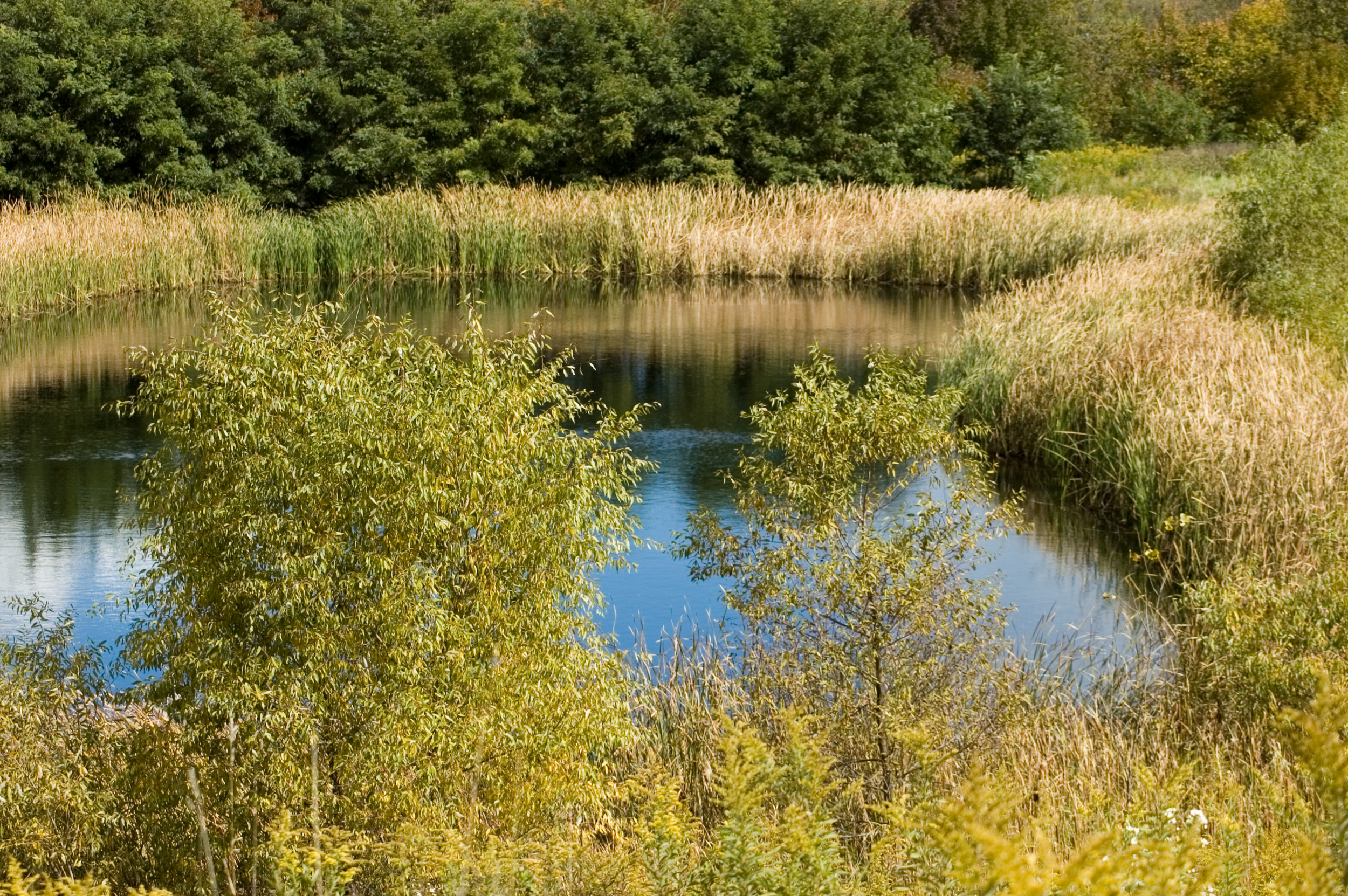Proper maintenance of storm water BMPs is necessary to ensure that these systems function effectively and continue to protect our communities’ lakes, streams, and drinking water. Additionally, communities which are regulated by a Wisconsin Department of Natural Resources MS4 Storm Water Permit are required to enforce maintenance on all BMPs that are included in their water quality compliance calculations. By following routine maintenance guidelines, owners can remain compliant and avoid the need for major, expensive renovations. Here are a few basic tips for preserving the life and effectiveness of your storm water BMPs.
Infiltration and Bioretention Basins
Bioretention basin
Infiltration basin
Remove debris in the forebay, inlet/outlet pipes, and spillway.
Remove excessive dead plant material in the early spring.
If an original species dies, try to replant a different local species in its place, as the original species may have been unfit for that specific location. Similarly, detect and control invasive species early.
It’s important to water plants in their early stages, but once the vegetation is established watering is unnecessary.
Address any erosion or settlement concerns immediately, before they turn into a larger problem.
Diagnose the reason for any prolonged ponding. This may include taking core samples and/or testing infiltration rates.
Remove tree saplings and mow in late spring to a height of 4-6 inches (before weeds go to seed). Depending on the specific plantings, it is advisable to enlist the help of a landscape professional to discuss specific vegetation management protocol, burn schedules, etc.
Periodically mow the maintenance access right-of-way.
Carefully inspect infiltration basins for proper operation annually and after severe storm events.
Maintenance practices for constructed wetlands are generally site-specific. Contact one of R/M’s experts for more information.
Wet Detention Ponds
Wet detention pond
Inspect the inlet and outlet pipes for clogging, animal activity, or other damage.
Repair erosion or animal activity damage to embankments and side slopes.
Inspect and repair malfunctioning mechanical components (if applicable).
Remove trees that grow around embankments, as they can impact the structural integrity of storm water ponds.
Detect and control invasive species early.
Remove debris or vegetation in the pond’s inlet/outlet pipes, trash racks, and spillway.
Remove sediment in the forebay and permanent pool to maintain a minimum depth of 3.5 feet. Sediment depth can be easily checked during winter ice-on conditions. Be careful when removing sediment, as many ponds have clay or synthetic liners that must not be punctured.
Periodically mow storm water ponds’ maintenance right-of-way and the embankment.
Carefully inspect wet ponds for proper operation annually and after severe storm events.
Permeable Pavement Systems
Permeable pavers
Clean the pavement surface using industry recommended methods, such as regenerative air or vacuum sweeping, at least twice per year.
If you notice water pooling after a storm event, clean the pavement surface to avoid clogging.
Repair any significant surface deformations and cracking that impacts the water quality function of the system.
Repair blocked, restricted, and/or eroding underdrain outfalls.
Repair and/or replant eroding run-on areas.
Grass Swales
Grass swale
If there is inadequate rainfall, swales should be watered to maintain plant survival until they have matured.
Prune and weed swales as needed, removing dead and diseased vegetation.
Remove trash and debris from the surrounding area.
Replace vegetation whenever the percent cover of acceptable vegetation falls below 90 percent.
Repair structural damage as needed.
Inspect inflow systems for clogging and remove sediment as appropriate.
Inspect swales for proper operation annually and after severe storm events.
All BMPs
Remove debris, litter, and grass clippings from sidewalks and pavement in the contributing drainage areas (e.g. routine street sweeping programs).
Encourage members of your community to pick up after their pets to avoid water contamination. Pet waste stations at key locations can effectively mitigate the amount of pet waste left of the ground.
Avoid using more salt than necessary during the winter. A little goes a long way!
Construction teams should take care to prevent sediment from leaving construction sites. The faster sediment builds up in infiltration basins, the faster the basins will require costly rehabilitation of the primary infiltration media.
Test soil in any landscaped areas and apply fertilizers following recommended application rates specific to those test results.
Learn More
To learn more about the importance of storm water BMP maintenance and how you can proactively care for your storm water BMPs, contact an expert today.
Article sources: Wisconsin DNR & The EPA
About the Author
Steven C. Wurster, P.E., CFM, CPSWQ
Senior Vice President and COO, Client Team Leader
Steve thrives in the area of storm water management. His experience as a project manager and project engineer includes municipal water resources master planning, storm water management facilities design and review, NR216 permitting and compliance, storm water utility implementation, environmental permitting and hydrologic, hydraulic, and flood plain modeling. He is also experienced in site grading and erosion control design, utility design, transportation facilities design, development review, construction management and general municipal consulting. Steve has been employed by Ruekert & Mielke, Inc. since 1999.










